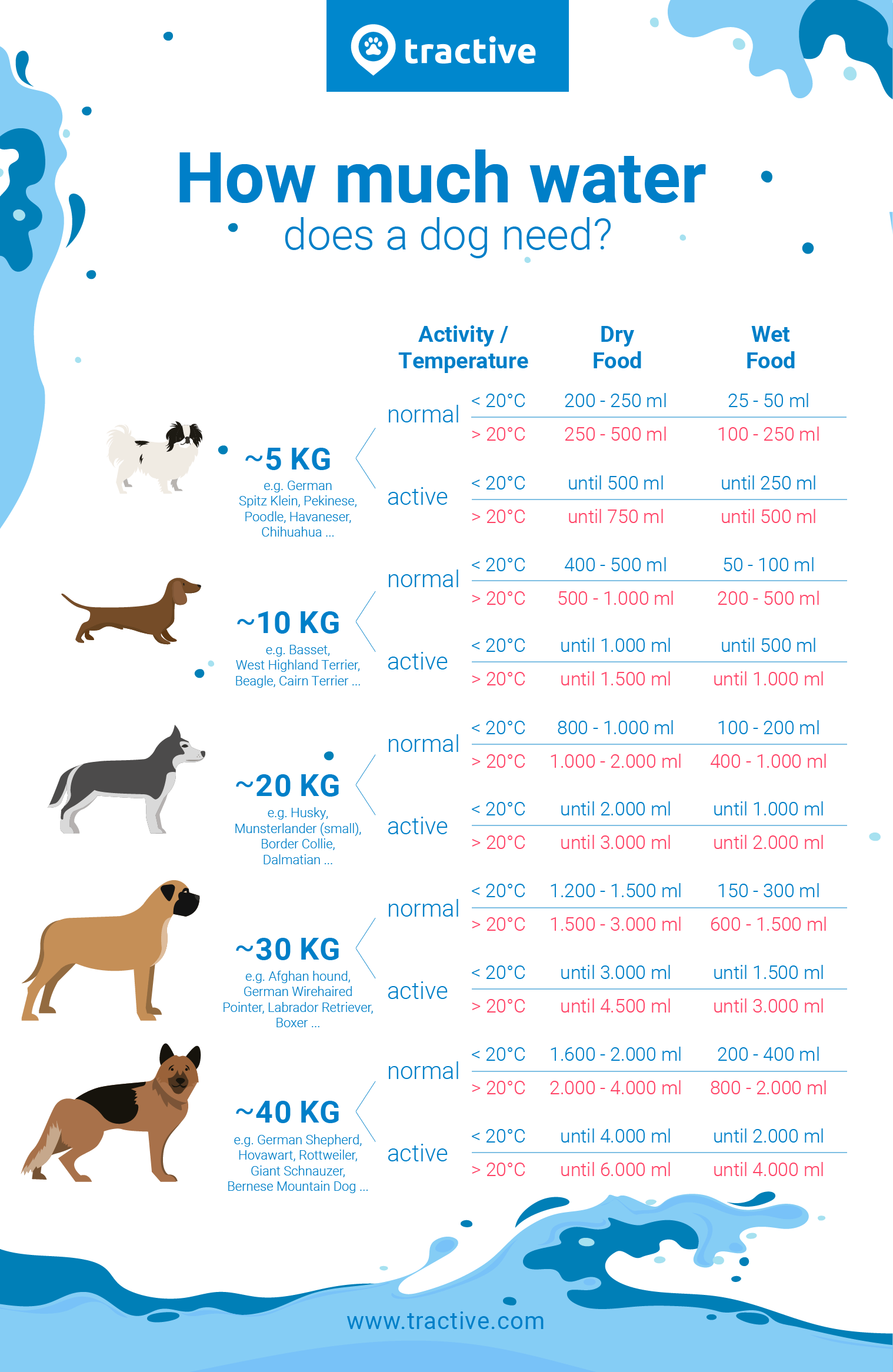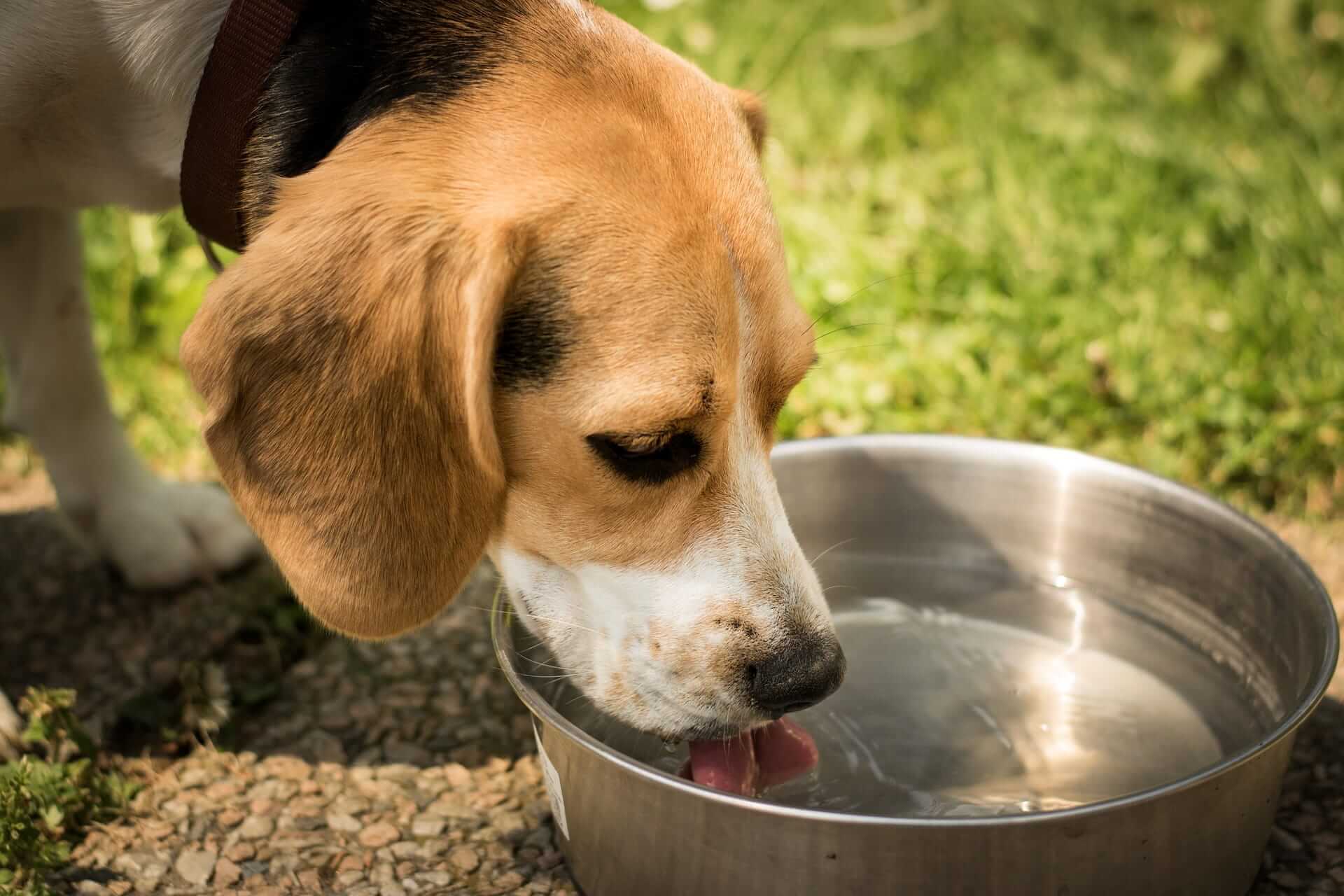How Can I Get My Cat To Drink Water
Your dog won't drink water and you're wondering why? Don't worry, you are not alone! Under most circumstances, dogs will drink sufficiently and they will remain well-hydrated with no encouragement, but sometimes our dogs just aren't thirsty. This article may help you to understand why your dog won't drink water and what can you do about it. If your dog is also not eating, discover the reasons why a dog won't eat.
Is water important for your dog?
Dogs, like humans, need to drink water every day as they are at risk from dehydration if they don't. They are actually at greater risk than humans because they release heat from their bodies much more slowly. Dogs do have some sweat glands in their foot-pads, but not enough to cool their body. The body temperature of a dog is mostly controlled through panting.
Good to know: Water is, therefore, very important for a dog and we, as dog owners, need to provide our pups with enough water every day.
How much water does a dog need?
As a general rule, the amount of water a dog needs to drink in a day is equal to:
100 ml water for every kg of body weight
However, other factors can be considered to calculate more precisely how much water a dog needs in a day. Dr. Jürgen Zentek, head of the Institute for Animal Nutrition at the University of Berlin, created several formulas which take into consideration the size of the dog, activity level, temperature, and food type. Based on his formulas we created this chart of how much water a dog needs in a day. So you can find out how much water your dog should be drinking on any given day:

5 Reasons why your dog won't drink water
Sometimes our dear pets refuse to drink water due to the following reasons:
- Inactivity & lack of exercise
- Unfamiliar surroundings
- Disease and illness
- Aging
- Fear and negative experiences
Let's have a closer look at these reasons.
1. Inactivity/lack of exercise
If the weather is cooler and your dog is getting less exercise than normal, then your dog just isn't that thirsty. If this is the reason, there is no need to worry! A slight decrease in water consumption due to reduced activity is no cause for alarm. However, consult a vet if your dog persistently refuses to drink.
Dogs should never go more than a day without water.
Since sufficient physical activity is important for the health of your furry friend, find out how often you need to walk your dog or start tracking your dog's activity with a GPS tracker and activity monitor for dogs.
Shop now
2. Unfamiliar places
Unfamiliar places and smells can be the reason why your dog doesn't drink. And thanks to their acute sense of smell, dogs know how to distinguish between familiar and unfamiliar sources of water. However if the smell of the water is not recognized as familiar, your dog may simply refuse to drink it. Planning a trip somewhere new? Here is what you should take care of:
- Bring a bottle of water from home
- Check on your dog's drinking behavior
- Keep an eye on your dog
3. Disease and illness
Certain health issues can cause a dog's thirst to fluctuate. In some cases, illnesses such as diabetes and kidney disease may cause a dog's appetite for water to diminish completely.
Bladder infection or urinary tract infection can also cause a decrease in thirst.
So if you think your dog won't drink water because of a disease, you should contact your vet immediately. It's a good idea to write your dog's drinking behavior down to help the vet figure out the problem.
4. Aging
An older dog may also avoid drinking water. It could simply be that getting to the water requires too much effort, or that the sense of thirst may be diminishing along with its appetite.
Older dogs get less exercise and therefore may not be as thirsty as younger dogs.
However, older dogs need to maintain adequate hydration levels, so if drinking seems to be an issue, switching to a moist food might help. As always, consult a vet before changing dog foods.

5. Fear & negative experiences
Dogs learn by association. If they experience fright or pain, they typically associate those negative feelings with the circumstances in which they first experienced them. If your dog has had a bad experience while drinking from the water bowl, for example someone accidentally stepped on his tail or paw, he may associated those negative accidents with the action of drinking. To remove the fear of drinking, you can try to use a new water bowl or you can try to put his water bowl in a different place.
If my dog won't drink water, can my dog drink milk?
At puppy age, many animals produce the lactase enzyme, responsible for decomposing the lactose. After the breastfeeding period, many dogs lose this particular enzyme and are not able to metabolize lactose anymore.
Good to know: Therefore it's important to stop feeding your dog milk as soon as he is no longer a puppy!
Symptoms of lactose intolerance:
- Stomach aches
- Feeling unwell
- Diarrhea
- Flatulence
Fermented products, such as hard cheese, yogurt or buttermilk, contain a smaller amount of lactose. Due to this reason, they are less harmful.
During the fermentation process, various supplements such as bacteria are added to the milk, which turns the lactose into a more digestible form.
Some dogs will tolerate milk better. This category includes mostly livestock guardian dogs, since milk (products) were often the only ones available. In case you wish to feed your dog milk, in addition to water (not as a substitute), make sure to choose a lactose-free milk.
Persuading your dog to drink water
In any circumstance, a dog should drink regularly. Otherwise, your dog may become dehydrated. If your dog won't drink water like they used to, there's a few things you can do to further persuade your dog to drink water:
- Changing position: Simply changing the position of the water bowl may sometimes work.
- Mixing food: Another solution is mixing wet dog food with water. Even though your dog won't drink from the bowl, he may happily drink water when it's mixed with food.
- Clean water bowl: It is also worth making sure that the water bowl is clean. It's a simple thing to do, but it might work.
- Contact vet: If your dog still won't drink water, or if he/she is suffering from an illness, you should contact a veterinarian as soon as possible. In case of illness proper hydration is important to the recovery process and it is therefore very important that your pet gets professional help.
- Exchange the water bowl: Try to avoid water bowls made out of metal because your dog can fear the noise. Use a glass water bowl if possible.
Overview of how much water your dog really needs
All dogs are different and so are their water needs. You may be wondering, how much water should your dog drink everyday, to satisfy his needs. Get a good orientation on how much water does your dog really need, depending on his weight, food diet and activity level:
| Weight Class & Dog Breed | Activity Level & Temperature | Dry Food vs. Wet Food |
|---|---|---|
| ~ 5 KG E.g. German Spitz Klein, Pekinese, Poodle, Havaneser, Chihuaha … | Normal < 20°C | 200 – 250 ml 25 – 50 ml |
| Normal > 20°C | 250 – 500 ml 100 – 250 ml | |
| Active < 20°C | Up to 500 ml Up to 250 ml | |
| Active > 20°C | Up to 750 ml Up to 500 ml | |
| ~ 10 KG E.g. Basset, West Highland Terrier, Beagle, Cairn Terrier … | Normal < 20°C | 400 – 500 ml 50 – 100 ml |
| Normal > 20°C | 500 – 1000 ml 200 – 500 ml | |
| Active < 20°C | Up to 1000 ml Up to 500 ml | |
| Active > 20°C | Up to 1500 ml Up to 1000 ml | |
| ~ 20 KG E.g.Husky, Munsterlander (small), Border Collie, Dalmatian … | Normal < 20°C | 800 – 1000 ml 100 – 200 ml |
| Normal > 20°C | 1000 – 2000 ml 400 – 1000 ml | |
| Active < 20°C | Up to 2000 ml Up to 1000 ml | |
| Active > 20°C | Up to 3000 ml Up to 2000 ml | |
| ~ 30 KG E.g. Afghan Hound, German Wirehaired, Pointer, Labrador Retriever, Boxer … | Normal < 20°C | 1200 – 1500 ml 150 – 300 ml |
| Normal > 20°C | 1500 – 3000 ml 600 – 1500 ml | |
| Active < 20°C | Up to 3000 ml Up to 1500 ml | |
| Active > 20°C | Up to 4500 ml Up to 3000 ml | |
| ~ 40 KG E.g. German Shepherd, Hovawart, Rottweiler, Giant Schnauzer, Bernese Mountain Dog … | Normal < 20°C | 1600 – 2000 ml 200 – 400 ml |
| Normal > 20°C | 2000 – 4000 ml 800 – 2000 ml | |
| Active < 20°C | Up to 4000 ml Up to 2000 ml | |
| Active > 20°C | Up to 6000 ml Up to 4000 ml |
More tips: how to make a dog drink water
Besides the tips above, if you want more ideas on how to make a dog drink water, check out the video below!
Want to keep closer tabs on your favorite four-legged fur-buddy? Check out the GPS tracker and activity monitor for dogs, and always have eyes on your fur-babe!
How Can I Get My Cat To Drink Water
Source: https://tractive.com/blog/en/good-to-know/my-dog-wont-drink-water
Posted by: edgeswitithe77.blogspot.com

0 Response to "How Can I Get My Cat To Drink Water"
Post a Comment